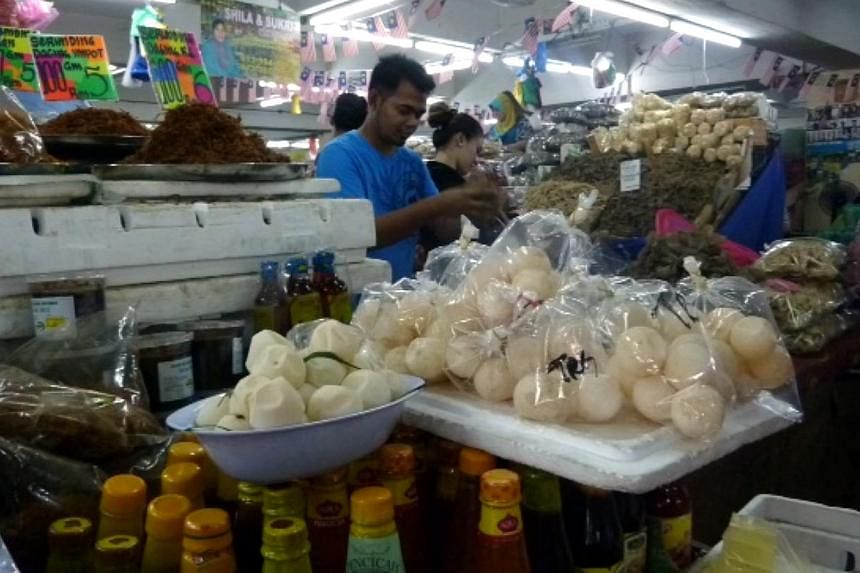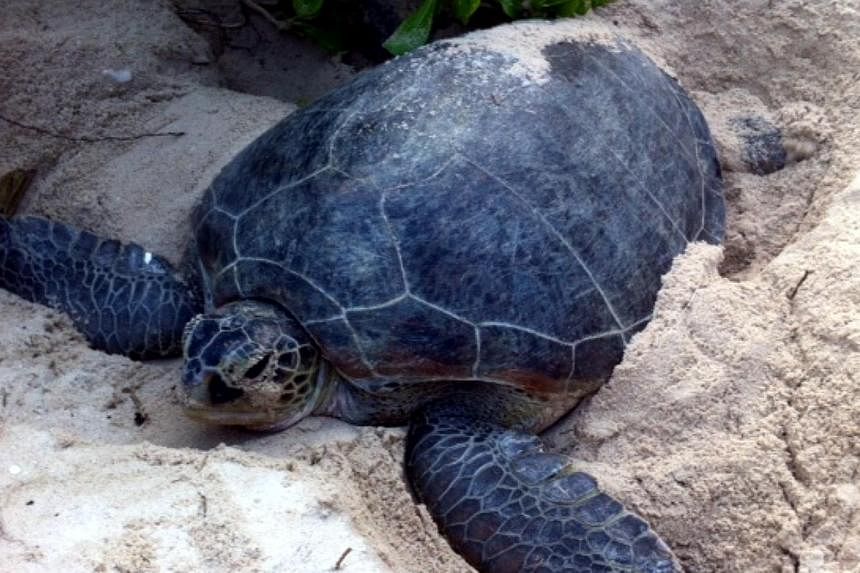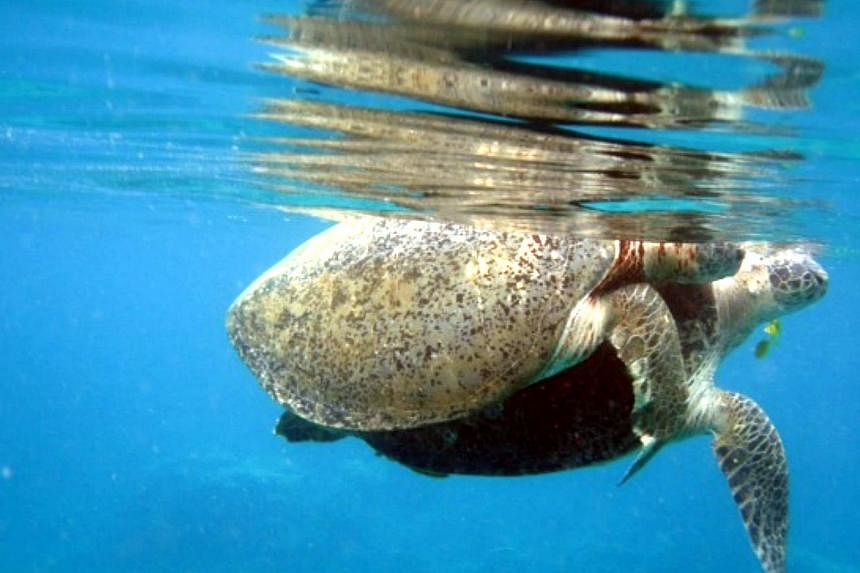Under the glaring sun of June, a friend and I set off to patrol a natal beach for generations of Malaysian sea turtles. Guarding their nests against human intruders and natural predators like monitor lizards was part of our duties as conservation volunteers.
That's when we caught four people relaxing in the glistening waters near the far end of this protected beach called Chagar Hutang. As we walked towards the group, their local guide approached us, telling us in a low voice: "That's the prime minister's son."
I had a closer look at one of the men with a fetching smile. Yes, that was Nor Ashman Najib, also known as Ji Ping, a Chinese name that he adopted while learning Mandarin in Beijing. The 23-year-old became a familiar face to Malaysians after appearing on his father PM Najib Razak's campaign trail during last year's general election.
The group of friends said they had come from The Taaras, a nearby luxurious beach resort. They were drawn to this remote beach that nestled on the northern tip of Terengganu's coral-fringed Redang Island, after spotting a pair of love-making turtles at the mouth of the bay.
While we shared their excitement, we had to tell them - as instructed - that the beach was off-limits to all visitors except a small team of native staff, research assistants and volunteers who had earned their access through advance bidding. The bay must also be free of human presence by 3pm to ensure minimal disturbance to expectant turtle mothers, which would be arriving in preparation for nesting.
Respecting the need to observe the rule, the male Chinese friend of Ashman said they would clear out of the tempting waters by 3pm, before Ashman himself added: "No, make it 2:45pm."
At Chagar Hutang, where only sea turtles make the VIP list, even the prime minister's son does not expect the red carpet treatment.
Spearheaded by the Sea Turtle Research Unit (Seatru) of Universiti Malaysia Terengganu (UMT), conservation efforts here began since 1993 to help stem the population decline of two breeds of turtles - the green and the hawksbill. The former, with a carapace measuring an average of 100cm in length, is listed as an endangered species by the World Conservation Union. The latter, a smaller and more nimble breed, is deemed critically endangered.
Another species - the giant leatherback that once fronted many of the country's tourism campaigns - had been declared locally extinct after decades of unchecked sales of leatherback eggs and a consumption ban that came too late.
To prevent another leatherback episode, the Seatru team takes its work very seriously. At Chagar Hutang, the turtles' needs take precedence over everything else. For example, as sea turtles are nocturnal during the breeding season, the staff here also live in "turtle time", staying up from 8pm to 6am to monitor nesting and hatching in between stargazing and firefly sporting.
And to make sure that the beach remains a conducive "maternity ward", the use of light is kept to a minimum throughout the night. Turtle mamas would not risk laying eggs on a brightly-lit human-infested shore. The teeny-weeny hatchlings - having wriggled free of their nests after some 45 days of incubation - also rely on moonlight reflected off the sea as a navigational cue. Having another source of light on the beach would likely confuse them and prolong their journey to the sea, which then increase their chances of falling prey to predators like the fast-moving ghost crabs.
Hence, volunteers here had to adapt to seeing in darkness, and turned to torchlights only when we had to take stock of the turtles' locations, labour status and the number of eggs laid. The solar-powered light in our living quarter was to remain switched off too, with an exception made one night after a yellow-ringed mangrove snake was seen writhing around our water dispenser.
The staff here also went to great lengths in other ways to care for the turtles. While most nesting turtles were left on their own to do what came naturally to them, the staff would give a hand to those with "special needs", such as a green turtle that they affectionately named "Kudung" (Malay for "crippled") after its missing hind flipper.
For several nights, Kudung had been hauling itself ashore to nest but with no success. With one flipper missing, the labourious process of digging a nest chamber with a depth of an average man's arm span became even more punishing for Kudung. So as Kudung struggled with sand-flipping in between loud, heavy breaths, the staff also joined in the backbreaking task, scooping up sand with their bare hands to help create a deeper nest chamber.
And when some mamas decide to nest on the two ends of the beach, where the sand is threatened with inundation, the staff would take pains to relocate their eggs to a better spot. There are also ongoing studies on the sea turtles' migration routes and reproductive patterns, with hopes of finding more effective means to better preserve the ancient reptile.
But even as painstaking efforts are made to boost the number of hatchlings at Terengganu's beaches, marine experts say only one in 1,000 of them can survive to adulthood. Worse, not all turtle eggs are allowed a fair chance to hatch. Some would have been attacked by crabs, fire ants and maggots, and those on non-protected beaches are still being collected for sale in the markets.
There is no outright ban on the consumption of turtle eggs in Peninsular Malaysia, unlike the case in Sabah and Sarawak.
"Kacau sahaja," said an elderly woman who ran a stall selling turtle eggs among other things in a bazaar at Kuala Terengganu. She was lamenting in Malay that we were just out to disturb her after we asked how much the eggs were going for.
Each turtle egg - sold in bags of 10 or served in plates with the fragrant pandan leaves - fetches between RM3 (S$1.20) and RM5, depending on whether the buyer is a Terengganu native or not, we figured.
That to the stallholders is definitely a handsome profit. And the trade will likely prevail, until and unless they get a slice of the eco-tourism pie and see for themselves how a healthy population of living turtles can be a more sustainable source of income.







